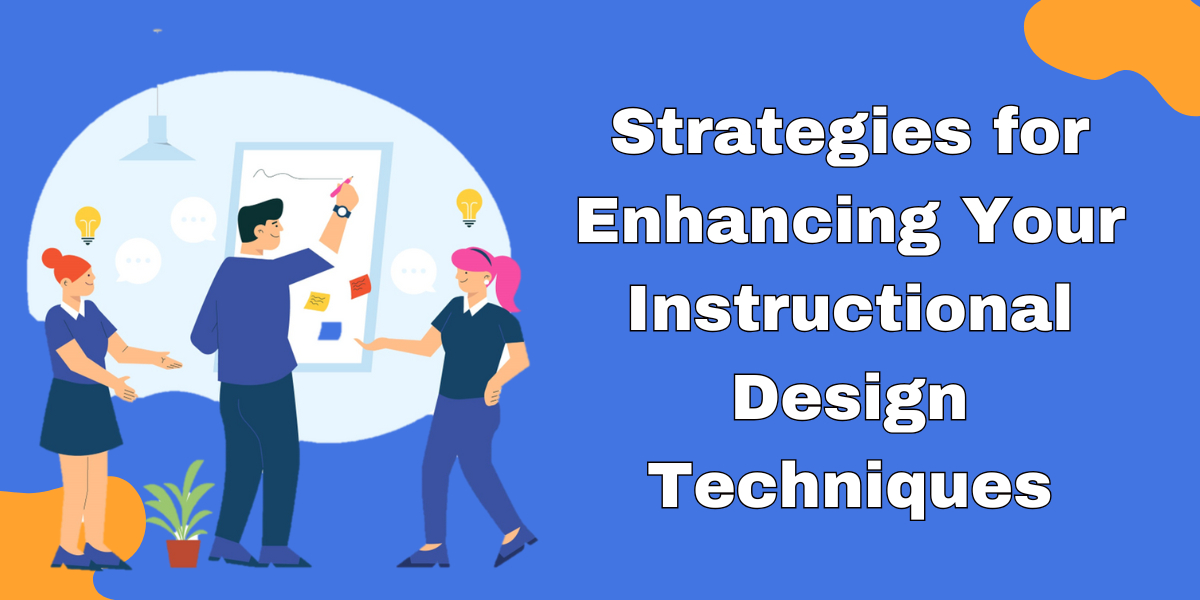In today’s fast-evolving world of digital education, instructional design has become more crucial than ever. Whether you’re creating training for a corporate environment or developing an online course, instructional design techniques can make or break the learning experience. As learning preferences shift and technologies advance, instructional designers need to stay ahead by refining and enhancing their techniques regularly.
Let’s dive into practical strategies that will elevate your instructional design skills, ensuring your content is effective, engaging, and optimized for your learners.
Understanding Core Instructional Design Principles
To build a strong foundation, it’s essential to revisit the core principles of instructional design. These include organizing content in a logical flow, aligning learning objectives with assessments, and ensuring the learning experience is interactive. Adapting these principles to fit today’s digital learning environments is key to enhancing instructional design techniques.
Assessing Learner Needs
Understanding your audience is the cornerstone of effective instructional design. Who are your learners, and what are their needs? Conducting a thorough learner analysis using surveys, interviews, and pre-assessments will help you identify the specific skills, knowledge gaps, and preferences of your audience. This insight allows you to tailor your content to be both relevant and impactful.
Setting Clear, Measurable Objectives
Using SMART (Specific, Measurable, Achievable, Relevant, and Time-bound) objectives helps in defining clear learning goals. By establishing these objectives, instructional designers create a roadmap that not only guides the design process but also keeps learners focused. This structured approach ensures learners achieve the desired outcomes.
Incorporating Adaptive Learning Techniques
Adaptive learning is a powerful tool in instructional design. By tailoring content based on a learner’s performance, adaptive learning provides a customized experience that adjusts as the learner progresses. Implementing adaptive learning modules enables you to meet learners where they are and support them in areas where they struggle, which leads to better retention and engagement.
Utilizing Engaging Multimedia Elements
Adding multimedia components—such as visuals, audio, and interactive simulations—enhances the learning experience. Visual aids, like infographics and video animations, make complex information digestible, while audio elements, like voiceovers, add an emotional connection. Interactivity, such as quizzes or interactive diagrams, allows learners to engage with the material actively, which promotes better comprehension and retention.
Focusing on Microlearning
In today’s busy world, learners often appreciate bite-sized content that fits into their schedules. Microlearning, or breaking down content into small, digestible chunks, helps maintain attention and facilitates faster knowledge absorption. Incorporate microlearning by structuring content around brief modules or lessons, allowing learners to progress at their own pace.
Implementing Gamification
Gamification uses game elements like points, levels, and rewards to motivate learners. When integrated effectively, gamification can turn mundane topics into engaging, goal-oriented learning experiences. You might create quizzes with rewards, use point systems for completed tasks, or add levels that unlock new content, all of which make learning enjoyable and rewarding.
Emphasizing User-Centric Design
User experience (UX) plays a significant role in online learning success. A user-centric design ensures that learners find the content easy to navigate and interact with. Apply UX principles by simplifying the course interface, organizing modules logically, and using intuitive navigation. Remember, a smooth learning environment fosters engagement and reduces frustration.
Using Data-Driven Insights for Improvement
Collecting data on learner performance and engagement provides valuable insights into what’s working and what’s not. Metrics like quiz scores, completion rates, and time spent on modules can inform your instructional design decisions. By continually assessing and analyzing data, you can refine your content to better meet learner needs.
Integrating Real-World Scenarios and Simulations
Learning is most effective when learners can connect it to real-life situations. Scenario-based learning and simulations bring theoretical concepts to life by placing learners in realistic scenarios. For example, if you’re training sales representatives, simulate customer interactions to give them a practical feel for the material.
Utilizing Collaborative Learning Techniques
Collaborative learning fosters a sense of community and enhances knowledge retention. Encourage peer-to-peer interactions through group projects, discussion forums, and virtual classrooms. When learners collaborate, they gain new perspectives and reinforce their understanding by explaining concepts to each other.
Leveraging Feedback for Continuous Improvement
Feedback is one of the best tools for refining your instructional design. Regularly collecting and applying learner feedback allows you to make adjustments that improve course effectiveness. Use surveys, feedback forms, and open forums to gather input on what learners enjoyed and what could be improved.
Ensuring Accessibility in Design
An inclusive design makes learning accessible to everyone, regardless of ability. Follow accessibility guidelines like WCAG to ensure that learners with disabilities can easily access your content. Implementing elements such as alt text, captions, and keyboard navigation helps create an inclusive environment that respects all learners.
Conclusion
Refining your instructional design techniques is an ongoing process that adapts to changes in technology and learner expectations. By applying these strategies—ranging from adaptive learning and gamification to user-centric and accessible design—you’ll create impactful learning experiences that resonate with your audience. Keep experimenting, stay open to feedback, and continuously enhance your design methods to keep your learners engaged and inspired.




